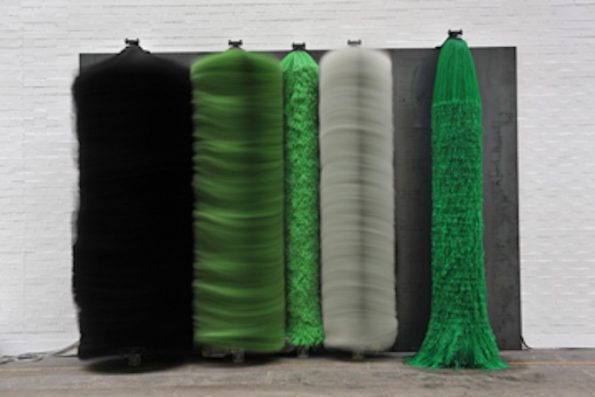Search
To search for an exact match, type the word or phrase you want in quotation marks.
A*DESK has been offering since 2002 contents about criticism and contemporary art. A*DESK has become consolidated thanks to all those who have believed in the project, all those who have followed us, debating, participating and collaborating. Many people have collaborated with A*DESK, and continue to do so. Their efforts, knowledge and belief in the project are what make it grow internationally. At A*DESK we have also generated work for over one hundred professionals in culture, from small collaborations with reviews and classes, to more prolonged and intense collaborations.
At A*DESK we believe in the need for free and universal access to culture and knowledge. We want to carry on being independent, remaining open to more ideas and opinions. If you believe in A*DESK, we need your backing to be able to continue. You can now participate in the project by supporting it. You can choose how much you want to contribute to the project.
You can decide how much you want to bring to the project.

One of the things the 20th century left us was the alleviation of not having the weight of rewriting history on our shoulders. A gesture is no longer a gesture with any pretensions of universality; its existence signifies its own particular identity, stating its way of being in the world, in conflict with others, with those different or similar.
Javier Hontoria remembers in ‘Sin Motivo aparente‘ (For no apparent reason) that an exhibition is a specific context. A finite place with its own rules, in this case constructed within the walls of the Centro de Arte 2 de Mayo in Móstoles. Inhabited by works of more than thirty artists and accompanied by a nice catalogue with texts by Abel Hernández Pozuelo, Carlos Marzal and the curator. The spirit that moves this community is to show itself as straightforward, insignificant and open to the reception of free and spontaneous readings by the public.
Two main axes articulate the exhibition: a reclaiming of the playful and poetic of the French artist Robert Filliou, and Laurence Weiner’s defence of the existence of something shared between art and public. Both appeal to the work of art and its audience having something in common; in the first case it is a type of attitude, in the second, linguistic. Interesting guides to define a theoretical framework today. The works, though with excessively disparate voices, repeat what seems to be a dialogue drawn from Beckett around the tautological absence of a storyline. Between them, some more apparently restrained pieces such as Sense activitat (Ignasi Aballí, 2013), A Long Day for the Form (David Maljovic, 2012), or Fear (Nedko Solakov, 2003) coexist with in principle more pictorial proposals such as Lichtzeang (Daniel Steegmann Mangrané, des de 1998), My Frontier is an Endless Wall of Points (After the Mescaline Drawings of Henri Michaux) (Joachim Koester, 2007), or Filipa Nomoro and Edwin Romualdo (José Díaz, 2013). But not one, pictorial or restrained, is simply form. Maybe this is what it would have been worth reminding the public: that even though in this case it is trying to be avoided, the members of the community do each have an individual storyline.
The design of the spaces includes a series of messages written large, directed at the public, that stimulate an open reading of the show. But isn’t that something the public always does, make their own readings of the work? Over and above the guides that normally proportion the curatorial discourse of any exhibition, I want to think that nobody represses the natural inclination to understand it through their own body. Maybe the uninitiated are even more disposed in general to alternate between the two games. Maybe to whom the invitation of filling the forms with their own subjectivity is directed at those who, as an occupational hazard or due to an excessive familiarity with certain discourses, have lost the practice.
But the important thing is that Hontoria stresses the specificity of the proposal. This is why carrying out an exercise in defence of the autonomy of art today is not the same as doing it in the forties. Or in the sixties. This illusion is framed in the first instance within a call to order in the pursuit of the universal purity of the art form –much needed for some after so much perversion-; and secondly, in the dogmatic innocence of believing that after the revolution of the aesthetic regimes of extreme abstraction of manufactured forms text would be the norm. Both share a universalizing substrate that is precisely what situates them in the past. For as each stated act today defines its own parameters of existence we can go to an exhibition that vindicates “an art based on the purest and most sincere spontaneity” and not think that, really, they are asking us to forget our own corporality. It’s worth making the trip, to enter into the fictitious community and go with the flow.

Paloma Checa-Gismero is Assistant Professor at San Diego State University and Candidate to Ph.D. in Art History, Criticism and Theory at the University of California San Diego. A historian of universal and Latin American contemporary art, she studies the encounters between local aesthetics and global standards. Recent academic publications include ‘Realism in the Work of Maria Thereza Alves’, Afterall, autumn/winter 2017, and ‘Global Contemporary Art Tourism: Engaging with Cuban Authenticity Through the Bienal de La Habana’, in Tourism Planning & Development, vol. 15, 3, 2017. Since 2014 Paloma is a member of the editorial collective of FIELD journal.
"A desk is a dangerous place from which to watch the world" (John Le Carré)